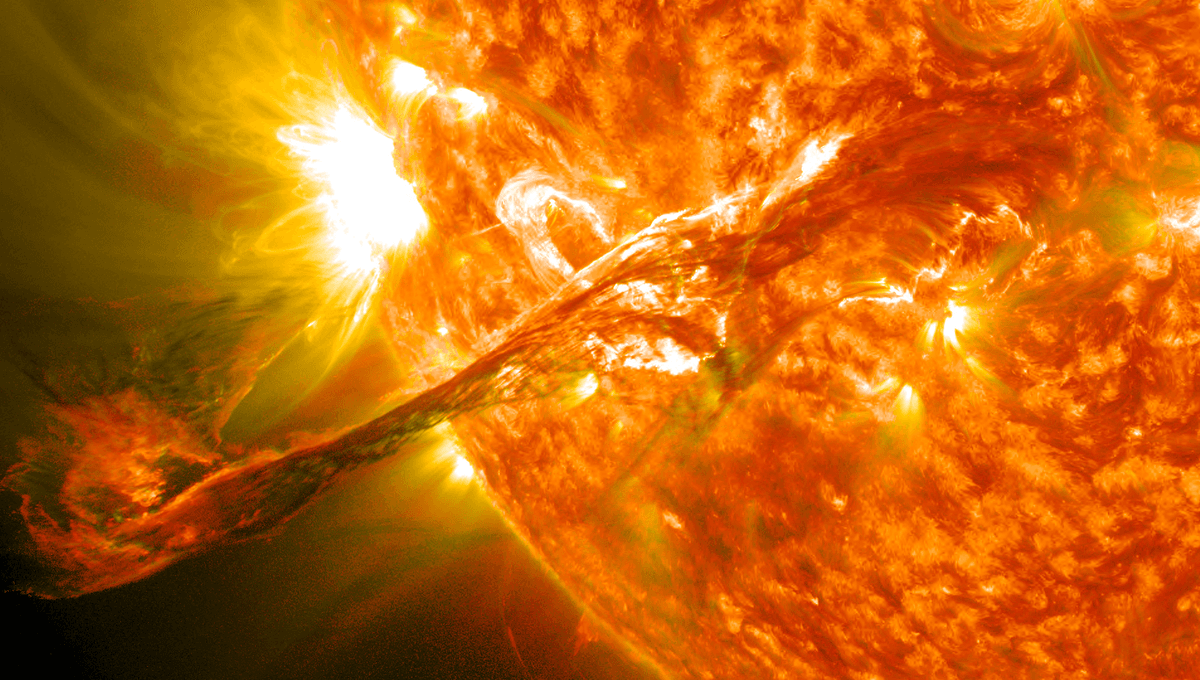
The Earth faces dangers, such as space rocks and close encounters with nearby stars. Nevertheless, having survived the dangerous early years, as far as we know the only thing likely to bring it to an end is the same thing that gives it life: the Sun.
So, if some very bad luck can be avoided, how long do we have until the Sun dies?
What do you mean by dies?
When the Sun runs out of material to fuse, it will become a white dwarf. It will spend a lot longer in the white dwarf phase than it does as a main sequence star. If you count being a white dwarf as a second life, the Sun could easily last for 100 billion years – far longer than the current age of the universe. Since they slowly cool throughout this time, releasing energy produced in their former life, white dwarfs are often called dead stars. That means for a star to be considered “alive” it needs to be fusing material to generate new energy, so that is what we will talk about here.
Solar life expectancy
The lifetime of stars is determined largely by their mass. Bigger stars run much hotter and go through their original gas a great deal faster than smaller ones. Larger stars birthed with the Sun have long since run through all their gas and turned into white dwarfs. Much larger stars raced through their lifespan even quicker, becoming supernovae billions of years ago and now being neutron stars or black holes.
Estimates of the lifespan of a one solar mass star vary, usually around 9 billion and 10 billion years, of which 4.5 billion of this is behind us.
Some solar mass stars end up dying earlier as a result of close encounters with companions, but as a solitary the Sun is spared that fate. Given the vast distances between the stars in our portion of the Milky Way, the chance of the Sun ending up colliding with another star is vanishingly small. The risk of a somewhat less close rendezvous with another star disrupting the Earth’s orbit while the Sun is still in the main sequence phase is larger, although still quite low.
Sadly, we don’t have that long
Before it dies, the Sun will run out of hydrogen in its core, which will eventually initiate helium-to-carbon fusion, while still fusing hydrogen in a surrounding shell. In this phase it puffs up and becomes a red giant, cooler than the Sun but far more massive. At this point it may swallow the Earth entirely, vaporizing all traces of the planet. A competing theory proposes the Earth will not be swallowed, instead being pushed to a more distant orbit by the pressure the Sun applies as it expands. In this case, the Earth may survive, but it will not be recognizable. Orbiting just beyond the enormous, bloated Sun, Earth will be hotter than Mercury is today, utterly unsuited to life.
Even before that, however, the Sun will start emitting more heat and light. Indeed, it is already growing hotter. Climate change deniers should not get excited; the increasing emissions are about a million times too slow to account for the hotter conditions over the last 50 years.
Over a billion years, however, slow heating adds up. The Earth will slowly cook in the face of this intensifying radiation. At first a far more advanced civilization may find ways to cool it down, using some of the wilder techniques sometimes proposed for human-induced global heating, like placing parasols in space. These could buy quite a few million years, but eventually – barring something inconsistent with our current knowledge of physics – Earth will have to be abandoned. Any future version of humanity would need to migrate to the moons of the gas giants, or to other star systems to survive.
Quite how long we have until that occurs depends on how tolerant you think our descendants will be of being slowly roasted, as well as estimates of the effectiveness of the cooling approaches discussed above. We can probably be confident that, if humanity doesn’t trash the place first, we have at least 500 million years of a habitable Earth, but probably not much more than a billion.
Implications for the Fermi Paradox
A notable feature of this is that when life first evolved on Earth it had at most five billion years to find a way off planet before its fate was sealed. If it had spent 50 percent longer in the single-celled organism stage, before complex life emerged, there would never have been a technological civilization. In that scenario, the Earth would have become too hot before dinosaurs appeared, let alone humans.
It’s possible the reason we have not encountered aliens is that life usually evolves a little more slowly than it has here. If so, G-type stars like the Sun would seldom produce species capable of working such things out. In that case, we would need to look to longer-lived K-type and M-type stars to harbor advanced civilizations, both of which may have other problems.
All “explainer” articles are confirmed by fact checkers to be correct at time of publishing. Text, images, and links may be edited, removed, or added to at a later date to keep information current.
Source Link: How Long Before The Sun Dies?